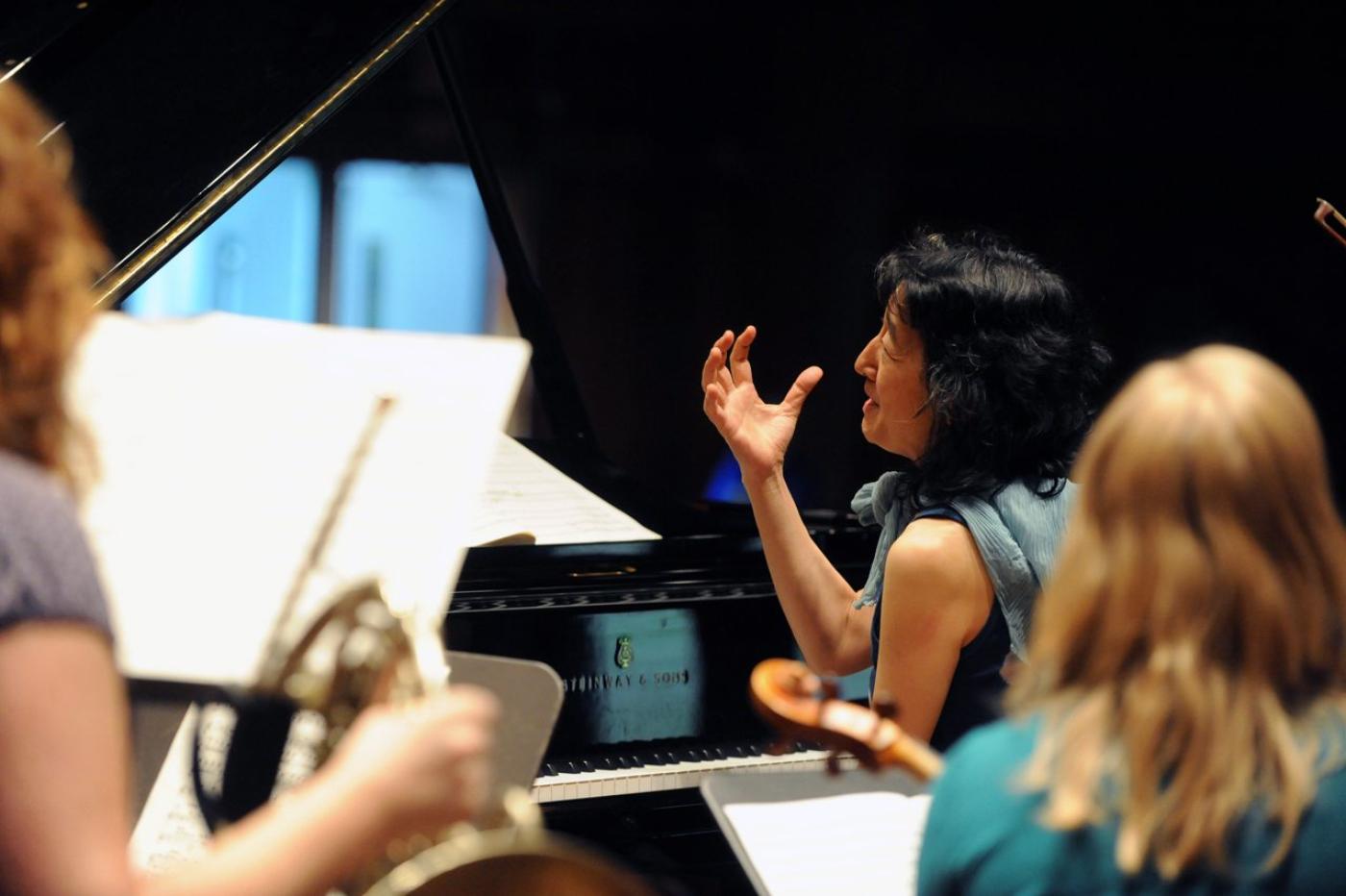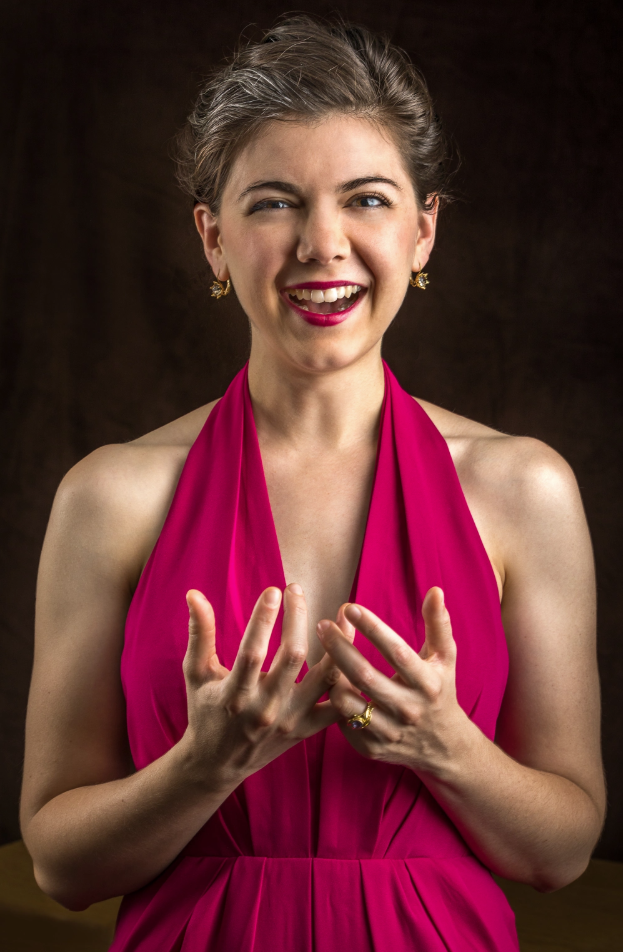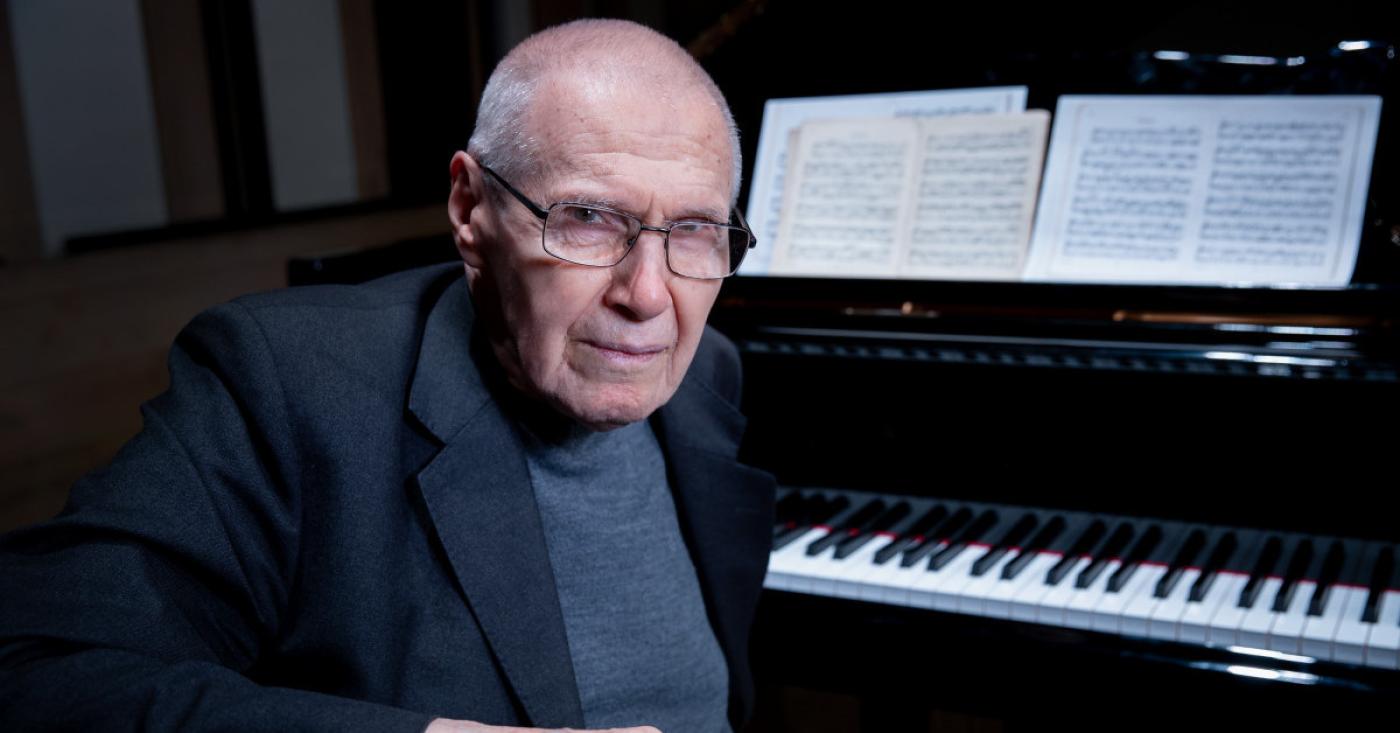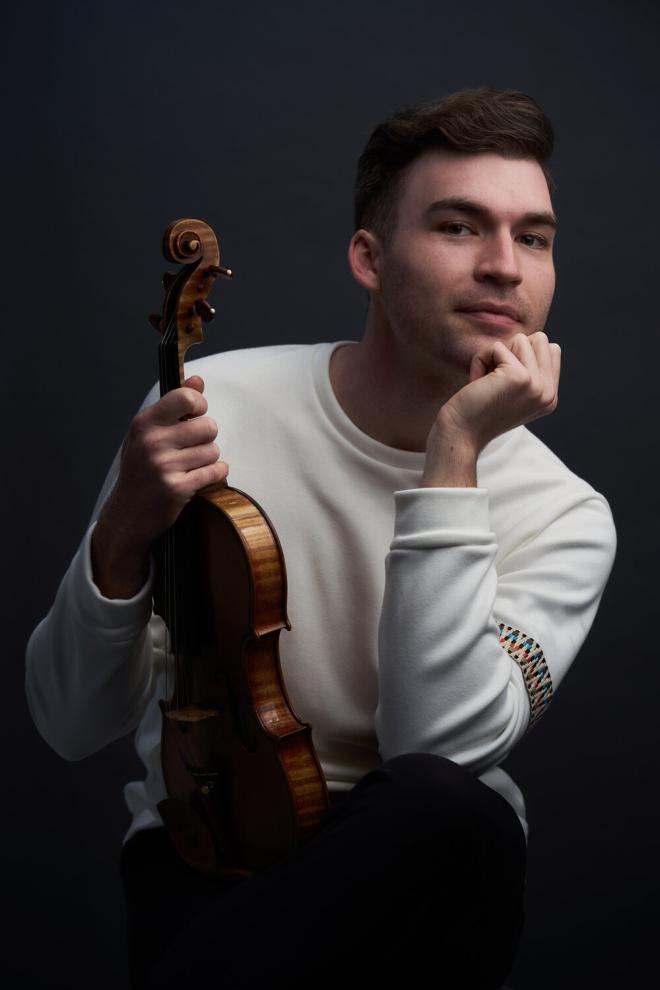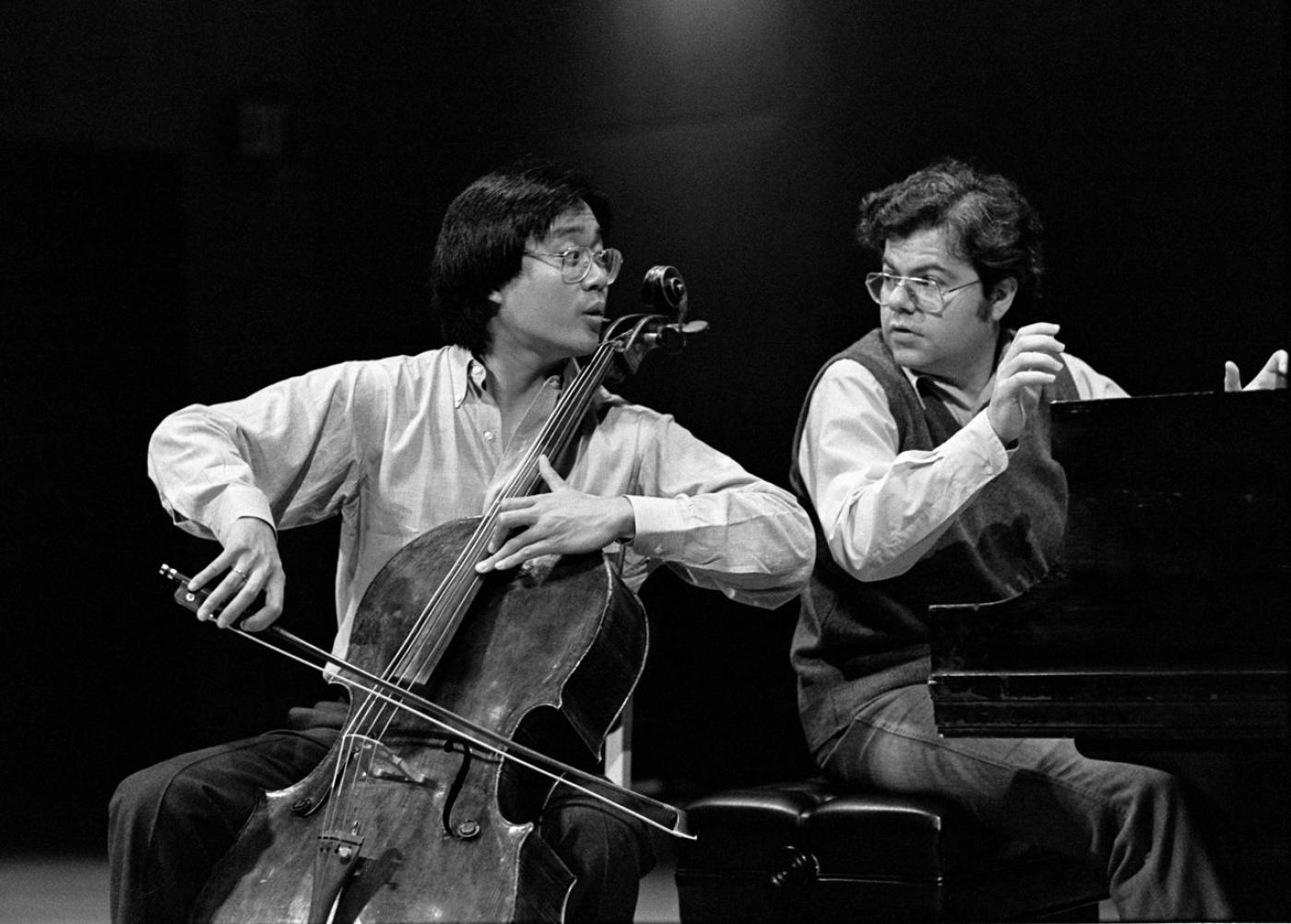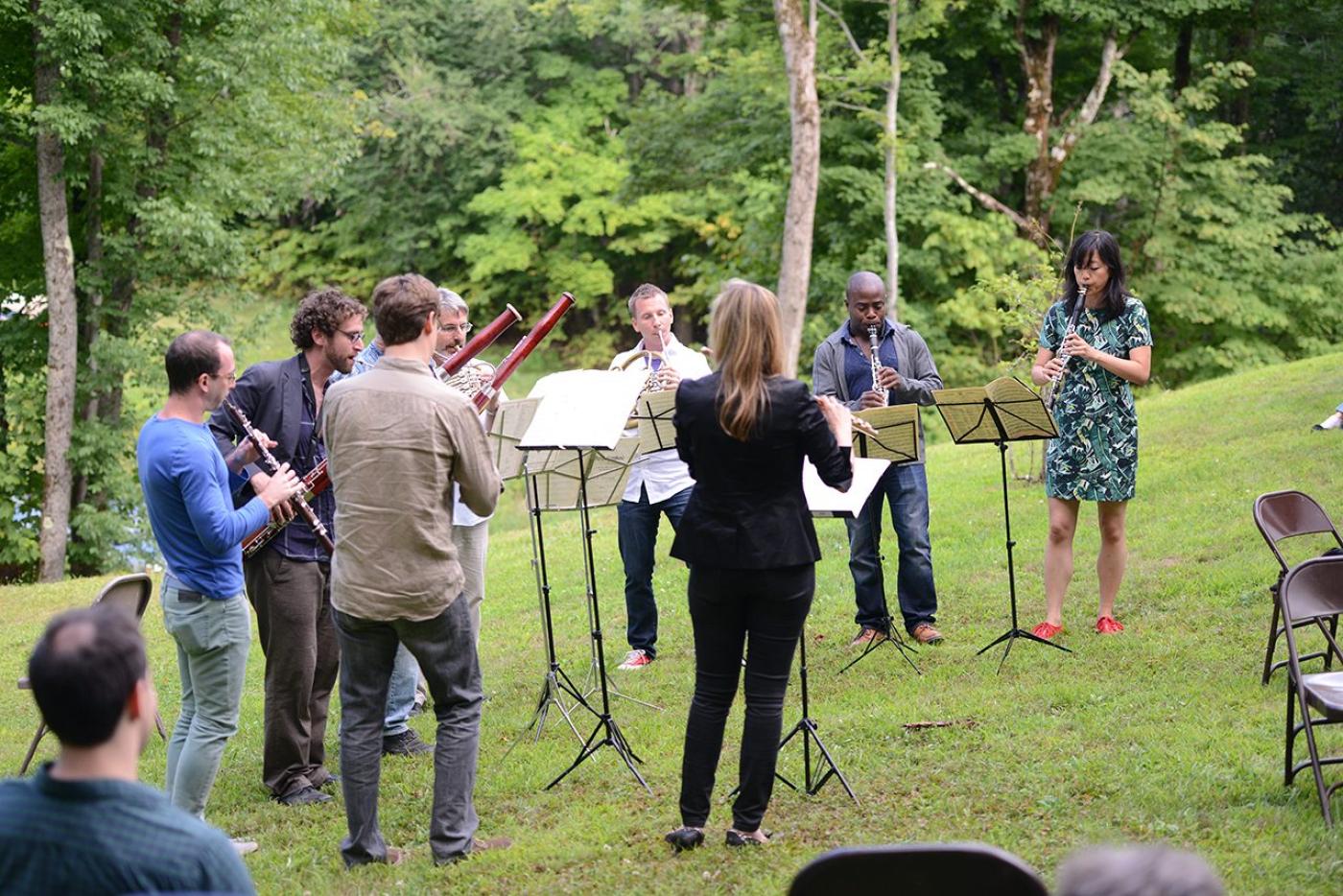The Phillips Collection has for many years stood as a true and vital friend to the Washington, D.C. arts community, not only as a world-class art museum but also as presenter of Philips Music, which brings international musicians to its intimate, art-filled Music Room. The tradition continues with the Phillips’s second collaboration this season with the Musicians from Marlboro touring program, an extension of the famed Marlboro Music Festival in Vermont.
For their April 13, 2023 program, Musicians from Marlboro offers a set of contemporary pieces and a set of traditional Classical fare. Contemporary music is represented by Amy Beth Kirsten’s yes I said I will Yes for soprano and double bass; Benkei’s Standing Death, a string quartet by Paul Wiancko, a frequent guest artist at the Phillips; and Duos for Soprano and Double Bass from The Notebooks of G.C. Lichtenberg by Hungarian composer György Kurtág. From the Classical tradition are Felix Mendelssohn’s Two Pieces for String Quartet, op. 81 and String Quintet, op. 29 of Ludwig van Beethoven.
I recently spoke with soprano Lucy Fitz Gibbon and violinist Alexi Kenney about this inventive program.
Linda Carducci: Composer Amy Beth Kirsten is recognized for unique explorations of how theatrical elements meld with voice, music and language. How is that exhibited in yes I said I will Yes between voice and double bass?
Lucy Fitz Gibbon: Great question! This piece, a setting of the last phrases of James Joyce’s Ulysses, is certainly rooted in the classical tradition but also draws on elements from more popular styles including folk and jazz. In the novel, these words are spoken by Molly Bloom, a sensually-driven opera singer who – though prone to infidelity – ultimately ends her chapter of this monumental work by recalling the moment when she fell in love with her husband. In Kirsten’s setting, you’ll hear Will tapping rhythms on his bass, and even singing along with me, elements that help to transport this piece outside of the trappings of most classical music. And though everything is very carefully notated, the piece at times has an almost improvised quality that melds with the improvisatory, lyrical language of Joyce.
LC: You team up again with double bass in György Kurtág’s Duos for Soprano and Double Bass from The Notebooks of G.C. Lichtenberg. This appears to be a time-spanning work: 21st century music by György Kurtág based on the notebooks of the 18th century physicist and writer, Georg Christoph Lichtenberg. Tell us more about the piece, and how Lichtenberg’s scholarly writings are manifested in the collaboration between soprano and double bass
LFG: György Kurtág’s music can range from immensely complicated to awe-inspiringly simple, but it always strikes me as deeply human. This 22-movement work sets Lichtenberg’s aphorisms as small jewels, each painstakingly crafted and illuminating some facet of the human experience. Many are ironic, including references to the concerns of Lichtenberg’s day that must have been striking to Kurtág in the late 1990s when he was working on this piece, and certainly give me pause today – particularly movements about Christopher Columbus and Benjamin Franklin. Others are simply funny, revelatory in their absurdism. One thing I love about singing Kurtág’s music is how much attention he devotes to the music of language itself. I can always tell that he has deeply considered not just the meaning of a word, but how the sound of a word creates its own complimentary meaning. As a singing musician whose color palette and articulation is inherently linked to this quality of language, it is a joyful process to enter into Kurtág’s sound world and to marry that with the double bass, an instrument with enormous range – both in terms of pitch and in terms of sonic possibilities.
LC: Beethoven’s ground-breaking string quartets may overshadow his only completed String Quintet (op. 29), composed in 1801 when his compositions were transitioning from the structured Classical tradition to more personal expression, viewed as early Romanticism. This String Quintet is nicknamed “The Storm”. Is that an apt description of the mood of this work, not only of the music but the personal struggles facing Beethoven at this point in his life?
Alexi Kenney: The nicknaming of Beethoven’s String Quintet as the “Storm” is, to me, a bit misleading. By and large, this piece is light and cheerful, occasionally venturing into the darkness and seriousness of Beethoven’s later periods, but I think having more in common with the easy virtuosity and sparkling style of Haydn and Mozart than the more wrought music of the Romantic period. There is, however, a lot of nature in the piece: I hear birdsong, rolling green hills, and majestic landscapes. My best guess is that the nickname comes from the last movement, where sparks fly from the first violin and fast tremolo in the other parts give it an irresistibly electric energy. This piece is such a joy to play and to listen to, and it’s even more fun for us to play since it’s still quite often neglected in the repertoire.
LC: You also perform in Paul Wianko's Benkei’s Standing Death, a 2020 composition based on a 12th century legend of a defeated warrior who comes to loyally defend his victor. In musical terms, how did Wianko convey the relationship between the elder Benkei and the younger Ushiwakamaru, his victor?
AK: Paul Wiancko’s music captures the intensity, tragedy, and complexity of the moment of Benkei’s death—it’s said that so many arrows pierced him as he stood defending Ushiwakamaru that they propped him up and made him appear standing—both in extremely lush and rich harmonies and melodies (at one point Wiancko writes the instruction “give everything”), and in the scene depicting Benkei’s death, a striking moment where violent cello pizzicato notes that represent arrows are shadowed by long painful slides from the other players. However emotionally turbulent it gets, the piece begins and ends in calmness. In these moments of stillness, Wiancko returns to Benkei’s spirituality, reflecting on virtue and sacrifice, as well as the worth and fragility of human life.
LC: The Musicians from Marlboro touring program is an extension of the beloved Marlboro Music Festival. The Festival has a grand tradition, going back several generations, of teaching and performing chamber music in the beautiful surroundings of rural Vermont.
I’ll post this question to both of you: Can you share a bit about the Festival’s mission and illustrious musicians who have contributed to its legacy?
LFG: In some ways it is hard to describe Marlboro if you haven’t been there. Today it feels a little bit like a time capsule, a refuge from the pressures of the ‘real’ world: part low-tech family summer camp (think square dancing, Shakespeare readings, afternoons at the lake), part intense devotion to chamber music amongst some of the best musicians you’ll ever meet (no explanation necessary there). Marlboro is centered around a music and musician-first ethos: rather than being presented in the spring with a list of concerts you’ll give and repertoire you’ll perform, you’re given a list of pieces you’ll begin to explore in various ensembles, and the summer develops from there. If, after several weeks of rehearsal, you wish to perform some of those pieces, you can propose them for a concert. If some of those ensembles aren’t fulfilling, you can drop the work and move on. And if some of those ensembles or pieces are deeply meaningful but not right for presentation, you could have as many as seven weeks of rehearsal with that ensemble and never perform a note for anyone else. Meals are eaten together, with a long tradition of serving each other at mealtimes (and throwing napkin balls). The setting is rural. There is no gift shop. It is all about the music, and the community.
That Marlboro exists at all is thanks to the vision of its founders Adolph Busch, Rudolf Serkin, and Marcel, Louis, and Blanche Moyse, all refugees who sought both a safe haven and a place to explore musical ideals. Since 1951, Marlboro has been such a place for generations of musicians, including Pierre-Laurent Aimard, Emanuel Ax, Joshua Bell, Pablo Casals, Jeremy Denk, Leon Fleisher, Richard Goode, Hilary Hahn, Mieczsław Horszowski, Gilbert Kalish, Lang Lang, Yo-Yo Ma, Mischa Maisky, Murray Perahia, Lara St. John, and current Artistic Directors Mitsuko Uchida and Jonathan Biss – to name just a few.
AK: Marlboro is unique in the world of music: it’s a school without teachers, a place in the middle of rural Vermont where legendary musicians of all generations come to play chamber music together and learn from each other. Everyone, no matter how famous or in demand, is asked to be in residence for a large chunk of the summer. The idea is that it’s a retreat from the whirlwind of the life of a professional musician (all you have to worry about for weeks on end is the phrasing of your Mozart quartet and whether or not you’ll be able to get in your swim or hike that day), and this slowing down of time leads to some magical results. The environment of Marlboro, as well as the world-class musicians who are in residence there, has unsurprisingly fostered some of the most memorable music-making of my life.
This Musicians from Marlboro event will be held on Thursday, April 16, 2023 at 6:30 p.m. (ET), offered in-person at the Phillips Collection Music Room, 1600 21st Street, NW, Washington, D.C. and live-streamed. Ticket reservations are required for each.
Details at The Phillips Collection: click here
PBS PASSPORT
Stream tens of thousands of hours of your PBS and local favorites with WETA+ and PBS Passport whenever and wherever you want. Catch up on a single episode or binge-watch full seasons before they air on TV.
